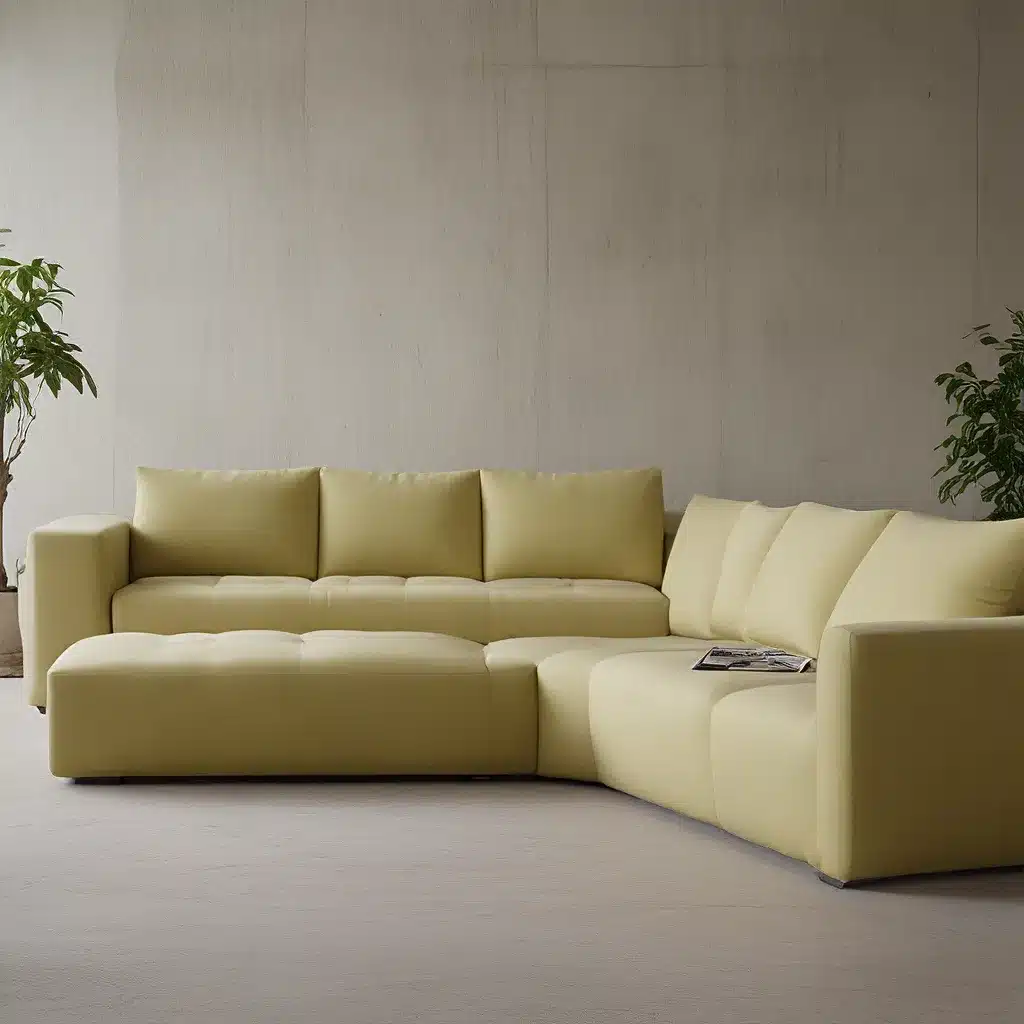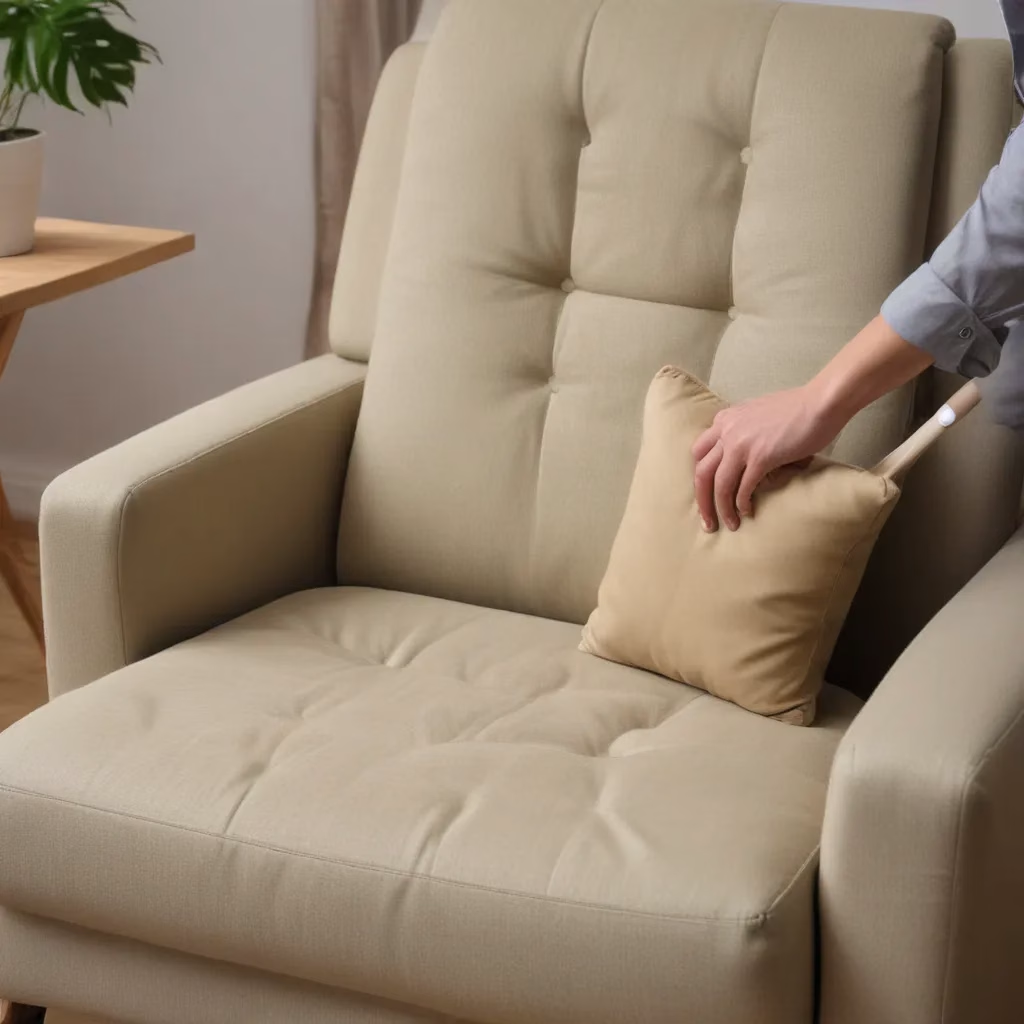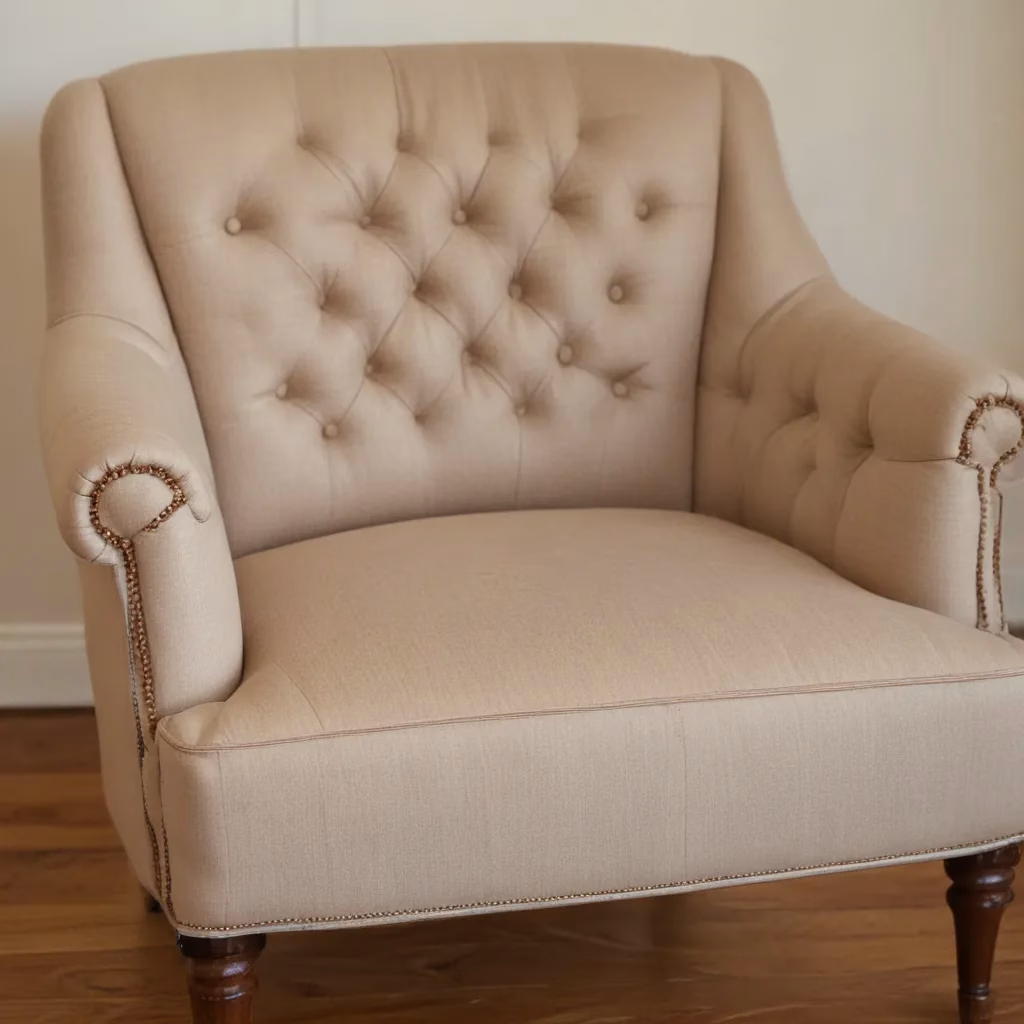
As a passionate advocate for sustainable living, I’ve always been fascinated by the intersection of style and eco-consciousness. So when I stumbled upon the concept of environmentally friendly furniture, I knew I had to dive in and explore it further. And let me tell you, the world of ‘green’ sofas is nothing short of remarkable.
Embracing the Renewable Power of Antiques
One of the most intriguing aspects of sustainable furniture is the growing interest in vintage and antique pieces. Now, I know what you might be thinking – how can something old and secondhand be considered eco-friendly? Well, let me enlighten you.
Believe it or not, antiques are perhaps the ultimate renewable furniture resource. As Shannon Ggem, a whole-home remodel and full-furnish specialist, so aptly puts it, “We just can’t keep throwing everything away. We have to start using some of these things and we have to allow the craftsmanship and work of the past to be utilized for longer than intended.”
And it’s not just the older generations who are embracing this trend. Millennials, in particular, are increasingly drawn to the quality, uniqueness, and story behind antique and vintage pieces. As Helen Rutledge, a marketing specialist and former development director of the Historic Charleston Foundation, observes, “My Millennial clients are adopting better things even if they are buying vintage and then painting the piece.”
Imagine the joy of scouring flea markets and antique shops, uncovering hidden gems that have withstood the test of time. Each piece has a history, a story to tell, and by giving it a new life in your home, you’re not only reducing waste but also honoring the skilled craftsmanship of the past. It’s a sustainable and soulful way to furnish your living space.
Prioritizing Sustainable Materials
But antiques aren’t the only way to go green when it comes to sofas. Nowadays, there’s a wealth of furniture options made from renewable and recycled materials. From reclaimed wood and bamboo to metal and recycled plastics, the choices are endless.
These sustainable materials not only reduce the demand for virgin resources but also come with impressive certifications, like the FSC (Forest Stewardship Council) and Cradle to Cradle, ensuring they meet stringent environmental and social standards. Choosing furniture crafted from these materials is a surefire way to minimize your carbon footprint and contribute to a healthier planet.
Versatility and Longevity
Another key aspect of eco-friendly furniture is its versatility and longevity. Modular and multi-functional pieces are a game-changer when it comes to reducing waste. Imagine a sofa that can be easily reconfigured to suit your changing needs – no more throwing out the old and buying new every time your life or style evolves.
Convertible seating, adjustable desks, and adaptable storage units all fall into this category of sustainable furniture. Not only do they help you avoid frequent replacements, but they also save you money in the long run. After all, a well-made, durable piece of furniture that can withstand the test of time is a far better investment than a cheap, disposable option.
Prioritizing Employee Well-being
Sustainability in furniture isn’t just about the environment – it’s also about supporting the well-being of the people who use it. Ergonomic design is a crucial component of eco-friendly office furniture. Chairs with adjustable features, desks that promote good posture, and accessories like keyboard trays and monitor stands can all contribute to a healthier and more productive workspace.
When you invest in furniture that prioritizes employee comfort and productivity, you’re not only creating a more sustainable work environment but also fostering a happier, more engaged team. It’s a win-win for both the planet and your workforce.
Biophilic Design: Bringing Nature Indoors
As if eco-friendly materials, versatility, and ergonomics weren’t enough, the world of sustainable furniture is also embracing the concept of biophilic design. This approach aims to connect the indoor environment with nature, using natural elements like wood, plants, and natural light to create a harmonious and rejuvenating space.
Furniture that complements biophilic design, such as desks made from natural wood or dividers with built-in planters, can transform your living or work area into a serene oasis. Not only does this enhance the overall aesthetic, but it also has been shown to improve mood, reduce stress, and increase productivity.
Partnering with Eco-conscious Suppliers
As you embark on your sustainable furniture journey, it’s crucial to partner with suppliers who share your commitment to the environment. Look for vendors that provide transparent information about their sourcing, manufacturing processes, and environmental practices.
Suppliers that use non-toxic finishes, low-VOC materials, and adhere to eco-friendly production methods are the ones you want to align with. They’ll ensure that your furniture not only looks great but also contributes to a healthier indoor environment.
The Future of Sustainable Sofas
As I delve deeper into the world of eco-friendly furniture, I can’t help but feel a sense of excitement and optimism about the future. The industry is evolving, with more and more companies embracing sustainable practices and design. And with the growing demand from conscious consumers, I believe we’ll continue to see innovative solutions that push the boundaries of what’s possible.
Who knows, maybe one day we’ll see sofas made from recycled ocean plastic or self-healing materials that can extend the lifespan of our beloved furniture. The possibilities are endless, and I can’t wait to see what the future holds.
In the meantime, I encourage you to explore the Sofa Spectacular website and discover the wide range of sustainable sofa options that are available. By making mindful choices and investing in furniture that minimizes its environmental impact, we can all play a part in creating a greener, more sustainable future.



